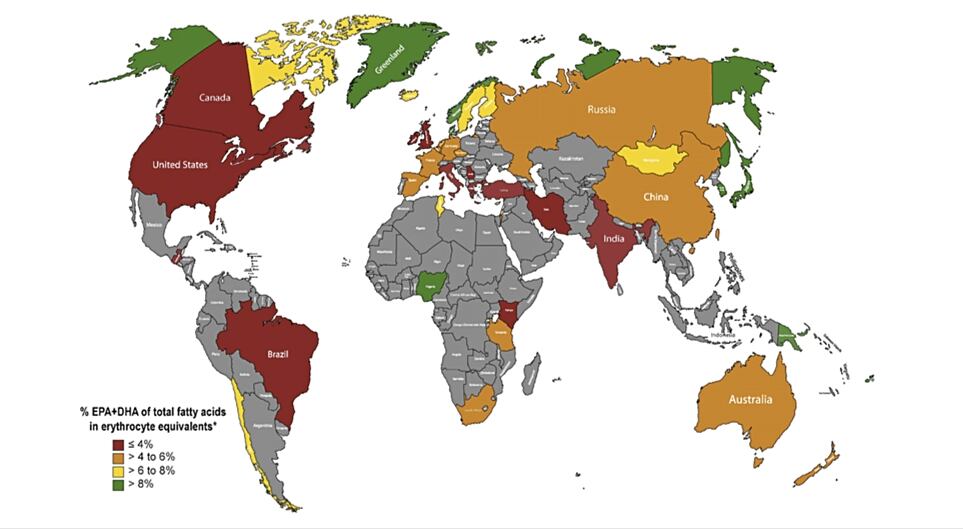One of the world’s most eminent omega-3 researchers, Prof. Harris is behind this commercial study. Through it, it is possible to the find the proportion of EPA and DHA in red cell membranes to other fatty acid, expressed as a percentage. Eight per cent is an individual's target, whereas the assumed Australian average is currently 4%. The score for the fatty-fish-loving Japanese is a well-oiled 10%.

The University of South Dakota professor has collaborated with some of Australia’s omega-3 majors, including the regional offices of Aker Biomarine and DSM, to distribute a stock of test kits to pharmacists. These will be sold to consumers, whose fatty acid readings will be collated to build a detailed picture of omega-3 levels in the country.
“The goal of the Omega-3 Index project is to expose healthcare providers and the public to the fact that omega-3 levels in the blood are actually measurable, that they mean something and that you can do something about them,” says Prof. Harris.
“And we are raising awareness that an omega-3 deficiency exists in the population, and if people don’t know they’ve got it, they won’t know to do anything about it.”
That project has just started, and is apparently very similar to a programme by the US National Institutes of Health in America in the Nineties, when people were rushing out to learn their cholesterol levels.
Both tests measure blood and reveal something about one's risk for heart disease. But unlike a build-up of cholesterol, an omega-3 deficiency is actionable by diet.
The Australia project is a pilot, but eventually Prof. Harris wants to do the same thing in Europe and America to broaden his data.
According to a recent survey, three-quarters of Australians are not aware of what omega-3s are, and how low levels can be a risk factor for sudden cardiac events. Only one in five of those surveyed are aware of this.
Many Australians find it difficult to reach their minimum requirements through food alone, says Gerald Quigley, a community pharmacist and media commentator.
“In a perfect world, you would get all the omega-3s you need by eating fish, but unfortunately fewer than 10% of Australian adults are eating the required level of fish regularly.
“For people who are struggling to reach their fish consumption targets, taking krill or fish oil supplements may be affordable and effective. Krill oil delivers omega-3 fatty acids mostly in phospholipid, rather than triglyceride form, providing an efficient means of delivering these vital fatty acids at lower dosages than fish oil,” Quigley said.
Prof. Harris says he is not surprised by the low awareness of omega-3s in Australia. He suspects that the true figure will be even less rosy as test kits start to be used.
Part of the long-term goal of the project is to fill in a map created by Canadian researchers that gives colours to countries based on known omega-3 intake trends in each one. North America was found to be most at risk, and Australia was one level better. Countries like Japan, of course, had the highest omega-3 levels.

The map also shows lots of countries as grey. In these places, there is not enough information on them to work out an average, so part of the project’s goal is to “give a colour to the countries on the map and figure out who needs help most”.
Still a very young research area, recent omega-3 enlightenment has come thick and fast and it is now the second most widely researched compound. Scientists like Prof. Harris understand that there is much more to learn.
“With the omega-3 index test, we are just now having a standardised marker of omega-3 status that we can link with disease,” he says.
Results otherwise would be all over the place If omega-3 levels were measured willy-nilly using different techniques.
“It’s easier to pool little studies together and put it together into one big study. The fog sort of clears and you can see what the relationships are between omega-3s and heart disease, cancer, dementia or depression. It’s just beginning to get started.
“We’ve done some studies over the last few years but it’s nothing like the database for cholesterol and heart disease, which started in the Sixties. We have only really started in the last five years.”
